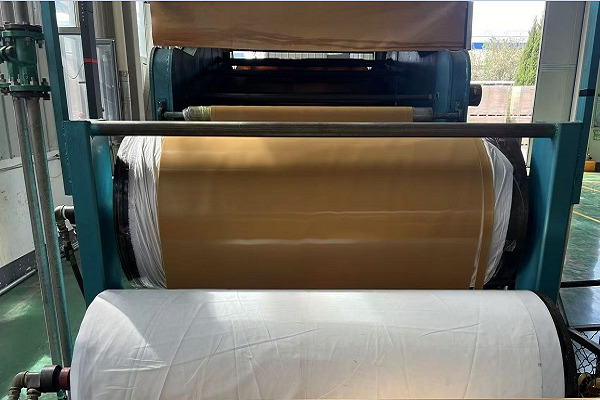
Natural rubber sheets are a common industrial material, and the strength of their bonding is crucial for many applications. Whether in construction, manufacturing, or the automotive industry, ensuring a strong bond of rubber sheets is an important step to guarantee product quality and safety. This article from Jingdong Rubber will detail the bonding methods of natural rubber sheets and some practical tips to help you achieve the best bonding results.
There are mainly two bonding methods for natural rubber sheets: hot bonding and cold bonding.
Hot bonding is achieved by vulcanizing the unvulcanized raw rubber together with the rubber products to be bonded.Although this method provides a good bonding effect,it requires heating and pressurizing equipment,making it inconvenient to use.
En contraste,cold bonding is more convenient and suitable for various on-site operations.The operation process of cold bonding is relatively simple and mainly includes surface treatment,selection and application of adhesive,and bonding.Surface treatment is the
key to successful bonding.The bonding surface must be cleaned and sanded to remove dust,manchas de aceite,and other impurities.Sandpaper or special cleaners can be used to treat the bonding surface to ensure it is clean and has an appropriate roughness,thereby enhancing the adhesion of the adhesive.

> Envíe correos electrónicos a sales@jingdongrubber.com,Obtenga una cotización ahora
Choosing the right adhesive is also a crucial step.
There are various adhesives available for rubber bonding on the market, such as neoprene adhesives, nitrile rubber adhesives, and butyl silicone rubber adhesives. These adhesives have excellent elasticity and are suitable for bonding soft or materials with significantly different thermal expansion coefficients. Selecting the appropriate adhesive based on specific application requirements can greatly improve the bonding effect. Por ejemplo, neoprene adhesives are often used in outdoor and high-load application environments due to their excellent adhesion and weather resistance.
When applying the adhesive, special attention should be paid to the ratio and uniformity. Generalmente, the adhesive is divided into two components, A and B, which are mixed in proportion and stirred evenly. Use a brush or scraper to apply it evenly on the surface to be bonded, ensuring full coverage and moderate thickness. A too thin coating may not provide sufficient bonding strength, while a too thick coating may result in incomplete drying of the adhesive, affecting the bonding effect.
Bonding is the final and most critical step.
Align the two surfaces to be bonded that have been coated with adhesive and gradually push them together, ensuring they are properly aligned. Use a rubber hammer to gently tap the bonding area to remove excess air and ensure a tight contact. This step requires careful operation to avoid creating air bubbles or unevenness. Si las condiciones lo permiten, apply a certain amount of pressure after bonding and maintain it for a period of time to enhance the bonding effect.
Además de los pasos básicos anteriores, Hay algunos detalles a tener en cuenta. Por ejemplo, the curing speed of the adhesive is significantly affected by the ambient temperature. En entornos de baja temperatura, the curing time may be prolonged, so the time for maintaining pressure should be appropriately increased. Además, different types of rubber materials may require special surface treatment before bonding, such as pre-treatment with specific primers, to improve the adhesion of the adhesive.
The strong bonding of natural rubber sheets requires comprehensive consideration of surface treatment, adhesive selection, application, and bonding. Through scientific and reasonable operations, not only can the bonding quality be improved, but also the service life can be extended, providing reliable support for various applications.
Jingdong caucho Co., Limitado. es un fabricante profesional de láminas de caucho, producir láminas de caucho de silicona, lámina de caucho natural, lámina de caucho flúor, hoja de goma de neopreno, lámina de caucho aislante,láminas de caucho EPDM, láminas de caucho resistentes al aceite, láminas de goma antiestáticas, láminas de caucho retardantes de llama, láminas de caucho conductoras, láminas de goma antideslizantes, y esteras de establo, etc.. con 40 años de experiencia en la industria, son populares tanto en casa como en el extranjero. Si necesitas alguno de nuestros productos,por favor envíe correos electrónicos a ventas@jingdongrubber.com.

